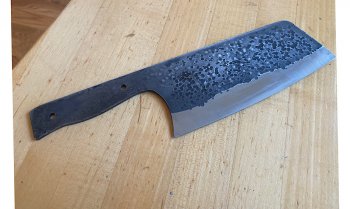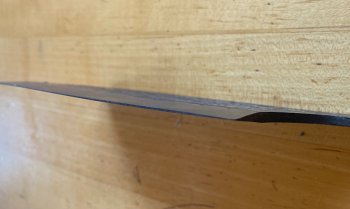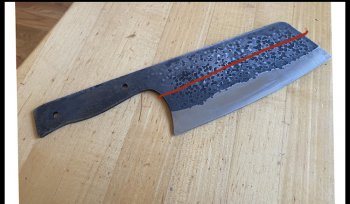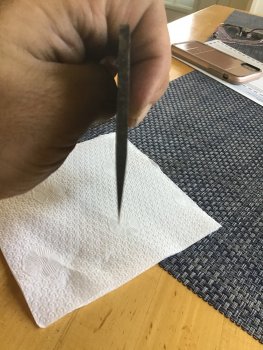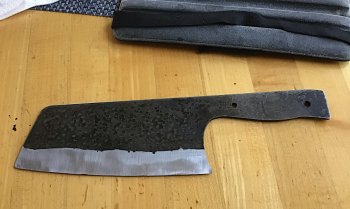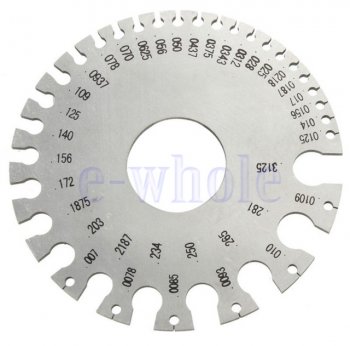Mark Barone
Well-Known Member
WIP for my brother’s knife. Got the warp out with your help. It was not forged. I just hammered marks in for cosmetics, I I have heat treated it with two temper cycles. I have lightly hand sanded the black to bring out the contrast. I’m not sure how far I will go with that. I just might stop here. On my belt sander I brought the up to 400 grit. I would like to hand sand the bevel in the opposite direction for a better finish. Also, if you look at my edge In the second picture , It is less than the size of a dime but not consistent. It might be hard to see. Do you think I could make that more consistent as I hand sand or do you think when put the secondary bevel on when sharpening it will work out? I am debating whether to run it back on the belt sander in that wider center area. 